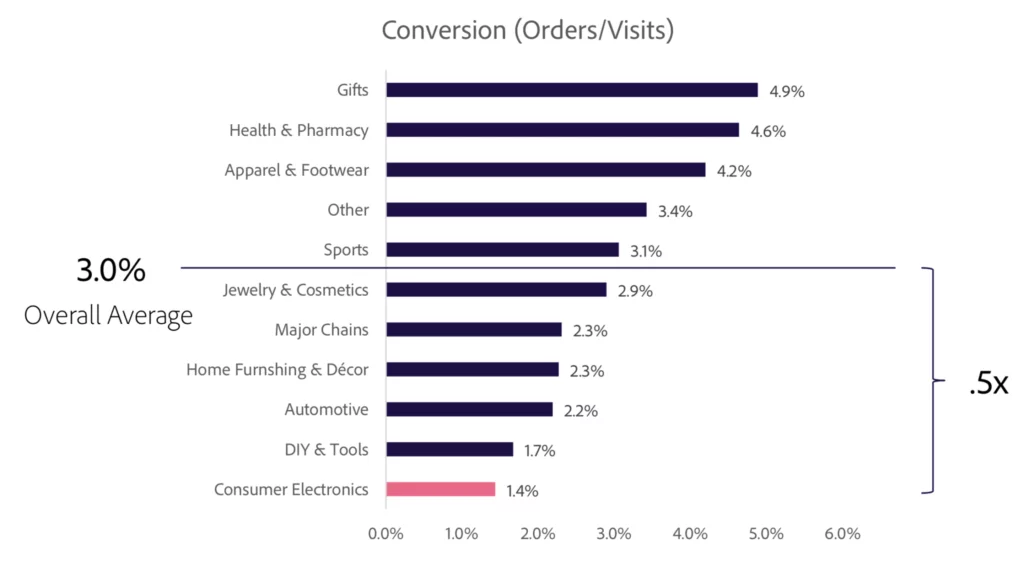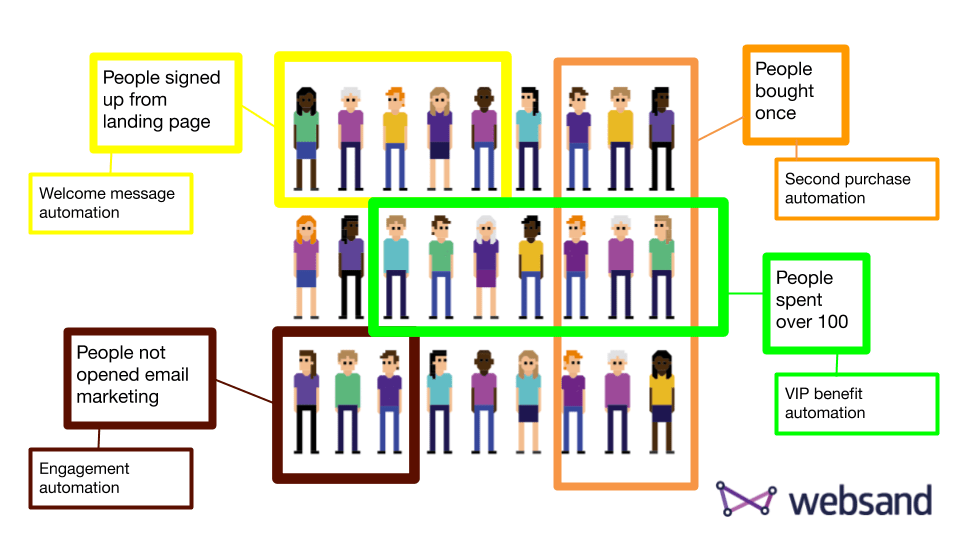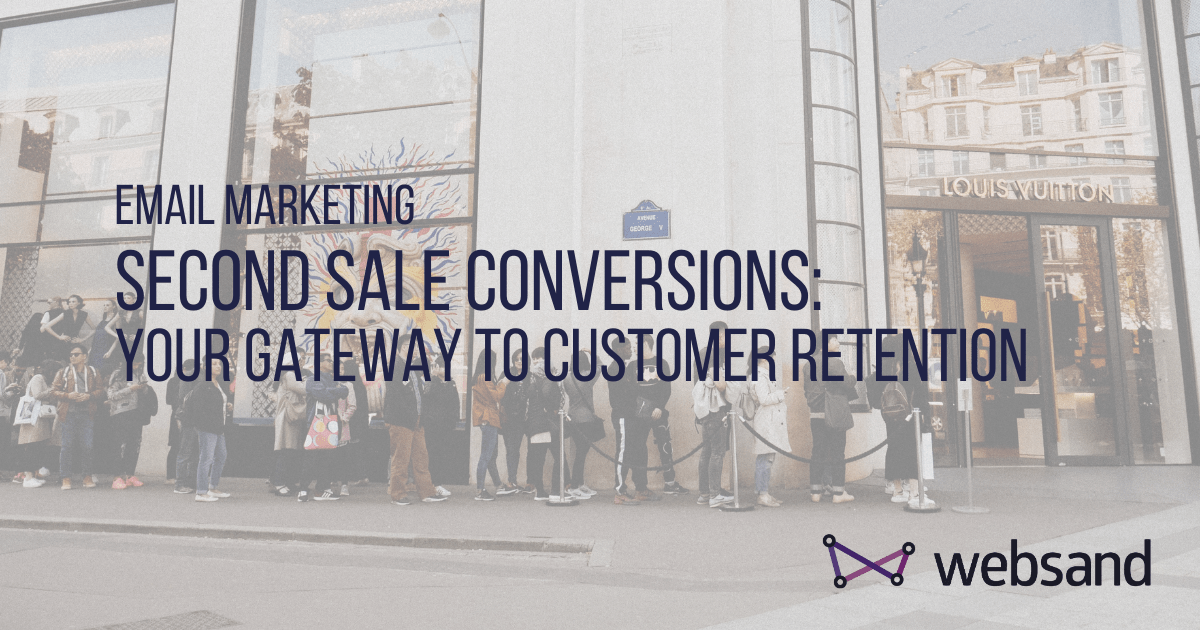The importance of Second Sale Conversions
Marketing focus tends to be on generating new customers rather than new custom. All that time, money and effort on finding new business from new customers rather than focusing on new custom.
We see the impact of this every single day.
In our experience, for e-commmerce busineses, over 80% of customers only buy once. So that means the majority of the time and effort you’ve invested in finding and creating a new customer is wasted. It’s such a shame.
Perhaps one of the reasons why is the lack of focus by marketers on second sale conversion.
But don’t worry. The great news is, it’s easy to fix.
The fantastic news is when you do you’ll be more profitable than ever before.
The benefits of second sale conversions
When it comes to the power of customer retention, the stats don’t lie.
One survey concluded that just a 5% boost in customer retention leads to an increase in profits of between 25% and 95%.
The initial customer acquisition cost (CAC) is typically 5 times greater than the cost of retaining a customer. This means driving that second sale conversion not only boosts a customer’s LTV, but is also more cost-effective for your business. That’s the very definition of a win-win.
The benefits of optimising your email campaigns for second sale conversions don’t end there, though.
Over half of businesses believe email marketing is the single most effective means of customer retention. This makes a well-oiled automed email strategy your golden ticket to driving repeat custom time and time again.
Better yet, driving a second sale conversion by nurturing a consumer-brand relationship improves the buyer’s experience, building brand loyalty in the process.
With 60% of consumers talking about the brands they’re loyal to with their family and friends, promoting repeat custom also has the potential to drive cost-effective new customer acquisition, too.
You just can’t argue with those numbers.
What businesses do wrong
With the benefits clear as day, you’d be forgiven for assuming businesses are already optimising their automated email marketing strategies to nurture the second sale conversion.
More often than not, though, this isn’t the case.
The role of the modern day digital marketer often revolves around finding the cheapest way of acquiring new customers.
Businesses are often guilty of obsessing over the new – new business, new customers, new tools, new approaches. Here at Websand, we’ve declared this a cardinal marketing sin.
New custom doesn’t always mean finding new customers
Why? Well, new custom doesn’t always mean new customers – a fact often lost by marketers.
If the objective is to generate new business (it usually is), then that new business is going to come from both new and existing customers.
Yet the majority of marketing budgets are focused on pay-per-click advertising, and therefore on the acquisition of new customers rather than a more balanced approach.
More often than not, the majority of these acquisition campaigns are spent managing the customer acquisition cost through constant data-driven adjustments. Valuable resources are spent finding customers, aligning your products or services with their needs and removing initial sale objections. And this is all with little guarantee of a conversion.
It’s safe to conclude, then, that a more efficient and effective use of resources is to recycle.
Look to utilise the weapons already in your arsenal – there’s often a whole library of existing data, tools and contacts at your disposal.
Capturing the initial sale
It’ll come as little surprise that campaigns focused on new customer acquisition are all about driving that initial sale.
More often than not, this results in missed opportunities as businesses fail to build a fruitful relationship with the lead. The focus is to drive that first sale and, once done, the attention will turn elsewhere.
The initial registration of interest (whether through a newsletter signup or contact form submission, for example) marks the beginning of a decision period between the initial sign of interest and the genuine desire to buy.
Often, businesses will fall at this very first hurdle.
Campaigns focused on initial acquisition will often follow the same route: an initial focused welcome email, and then the prospect is thrown into the ‘newsletter’ process.

It should come as no surprise, that the first email – the targeted focused one – will be the most effective communication within that sequence.
After that, there’s often a sharp drop-off, with little to no follow-up.
With both prospects and customers all getting the same ‘newsletter’ rather than targeted relevant messages.
Starting on the right foot. Nurturing the initial customer relationship
The beginning of any customer relationship is the initial signup, and in order to get that person from a prospect to a customer you’ve done something right.
That’s to be celebrated as it’s not easy.
According to Adobe Digital Index 2020 report into consumer electronics the average e-commerce conversion rate is only 3%. And that’s based on those people that have already got to your website.

In that initial conversion process, you’ve got a load of factors to overcome, some of them you can influence, some you cannot.
Let’s look at the things you important to converting new sales.
Being found. If someone is looking for the things you offer, how likely are you going to be found.
Competition. How many other businesses are offering the same things you are, and are they more likely to be found or ‘known’ than you are?
Dealing with objections. Once you’ve been found, and selected as an option. How are you removing any sales objections? Showing the right information to the prospect to help move them to the purchase decision.
Of course you’ve also got other factors in play that you cannot control or influence but could be opportunities to generate more sales.
Social impact. For example, COVID, for some businesses it’s been a killer, but for others a massive opportunity.
Weather. If you are selling seasonal products or services, the weather could have a huge impact on sales. So you’ll be glued to the weather forecast on a daily basis.
Planning your email marketing content.
When creating your marketing plans, these factors will need to be considered into your initial email marketing sequence.
If you are selling a high ticket item, you might need a multi-step welcome email process to remove all the typical sales objections and build trust to make sure you maximise your conversions.
For others, it might involve making sure the ‘hottest’ or ‘trending’ items are known by new signups to get the best conversion.
Whatever your business, you need to nurture relationships from the off. This way, you can increase the likelihood of customer retention from the word ‘go’.
Think of the second sale conversion as “acquisition part two”
Marketers love a conversion funnel. You’ve got the welcome process in place, converting those unknown prospects into known customers.
The next stage is to take the same concept but apply it to the second sale. The objective being, get the second sale conversion.
Post sale marketing needs to be more than ‘give us a review’
Typically the post sale customer marketing process involves trying to get a review from the person that bought. No doubt that is an important process, and one that can help you understand feedback from customers.
However, the real reason that process is in place is to help acquisition.
That’s not just an opinion. Read the benefits of any reviews site and they’ll list the following reasons why you should be using their review platform.
- To help show new customers that you are trustworthy.
- To boost your SEO scores.
- Add some gold star reviews to people searching for your products (google shopping)
Once someone has bought from you for the first time, it should be the beginning not the end.
With a little respectful focus on second sale conversion, you’ll soon be able to create a new way to generate more revenue for your business.
Nurturing the second sale
The secret to sustainable sales performance is treating every sale with the care and attention of a first-time sale.
The same underlying principles that apply to initial customer acquisition are true of converting customers the second, third, fourth and hundredth time.
There are just some new additions to your bag of tricks that need to be leveraged after the coveted first sale.
Before you go forth and convert first-time buyers into loyal repeat customers, let’s take a look inside your bag of tricks for driving second sale conversions.
Understand the first sale conversion data
With the first sale locked down, you’ve now gained access to a powerful asset – customer conversion data.

Analysing the circumstances in which this first sale was able to happen will allow you to recreate this environment again and again.
It’s crucial to note that there’s a finite window of opportunity that opens immediately following the initial purchase, and your time to capitalise and generate repeat custom is limited.
By identifying the product or products purchased and any other available conversion data, you can begin personalising communications with a new level of accuracy.
Analyse your data on past failures
Just as data on previous successes is a valuable marketing asset, so too is any data on past failures.
By process of elimination, you can establish which offers and forms of messaging sealed the deal and, importantly, those that didn’t.
Continuous testing (to a point) and refinement based on the results of this testing will help you to steadily refine your communications and tap into the buying triggers that influence your customers.
Cross-sell opportunities
Knowing your first-time customers’ product preferences creates opportunities galore for cross-selling.
By finding and promoting products that are complementary to their original order, you can persuade customers that your business is able to solve not one but many of their problems – whether their motivations to buy are related to practical concerns, time or cost savings, or lifestyle or personal image enhancement.
Upsell opportunities
With your cross-sell strategy locked and loaded, there’s also the upsell to think about.
Rather than pushing complementary products, this stage involves identifying upgrades to the customer’s initial purchase that enhance a product’s standalone features and benefits.
Brand loyalty building
Throughout your entire relationship with a customer, continuous loyalty marketing is key to remaining relevant and driving repeat revenue.

Whether this involves sharing glowing reviews from happy customers, dropping some knowledge in the form of educational content or simply going above and beyond to surprise and delight one-off customers, nurturing loyalty is vital to nurturing the second sale
With the combined power of these key ingredients, nurturing the second sale becomes a matter of when, not if.
The growth of subscription businesses
One of the impacts of COVID has been an explosion in the number of subscription businesses. These businesses understand the importance of getting that second sale and build it into their processes.
Your business might not fit the subscription model, however, there is no reason why you can’t apply a similar strategy.
Start your plan by considering your customer lifecycle, and seek out the answer to this question. “If someone purchases from you, when would they need to purchase again?”
And then build your second sale conversion process around that point.
Promoting that second sale
We’ve all moaned about the ‘new customers’ only offers splattered across websites, but have you considered a second sale promotion?
No reason why you couldn’t offer a promotional offer to someone to get them to purchase again.
Ideally a tailored offer of value to help you maximise that second sale.
Think about the money to spend on acquiring new sales from new customers. Perhaps use some of that ‘CAC’ spend and apply it to boost more sales from your existing audience.
It’s something that really works, and when you get the metrics right, the ROI is huge.
Consider this…
You offer 10% discount on each new newsletter signup. That’s in addition to the acquisition spend to that point.
What would happen if you offered another 10% off if they purchase again in the next 30 days?
Based on our experience this is what happens.
- The second sale conversion rate goes up
- The average spend of those transaction goes up (because they are getting a % discount)
- The cost of that offer is way lower than the newsletter discount offer as you haven’t got any additional marketing costs (no ppc spend involved)
- Your customers are happier. You are giving them something they didn’t expect, and even if they don’t use the offer, they’ll appreciate the offer. It’s going to enhance their customer experience with you and that’s important.
Making a second sale promotion fit into your marketing
Obviously you want to be using this as a ‘special event’ and not build it into customer expectations. Or maybe you do?
Remember to consider how this promotion would fit into your normal business practice and how you can make it appealing and relevant to your audience.
Don’t be afraid to be creative in how you apply this in practice, and don’t be afraid to change things around if things don’t go to plan. This is a ‘one-to-one’ offer between you and your customer, so you can switch things around. Unlike the 10% off on first order, this offer is not published.
Get the most from your email marketing.
And finally, all of the strategies listed above as best served by good old fashioned email marketing. The main reason, it’s data driven, fully in your control and gets you the best return on investment.
No surprise then that in a recent study by Small Business Trends.
“80% of businesses noted that they rely on email marketing for customer retention”
Small Business Trends
Email remains the best channel to build customer relationships and deliver customer retention.
Optimise your strategy for second sale conversions today
When it comes to driving second sale conversions, all the data you need to begin successfully harnessing relationships and retaining your customer base is already in the palm of your hand.
Get your free 14-day trial of the Websand platform today to unlock the full potential of this data, and begin nurturing lasting relationships that keep your customers coming back for more.
It’s time to start getting more from your email marketing
Sign up for a free Websand demo and let’s show you how to get the best from your email marketing.
